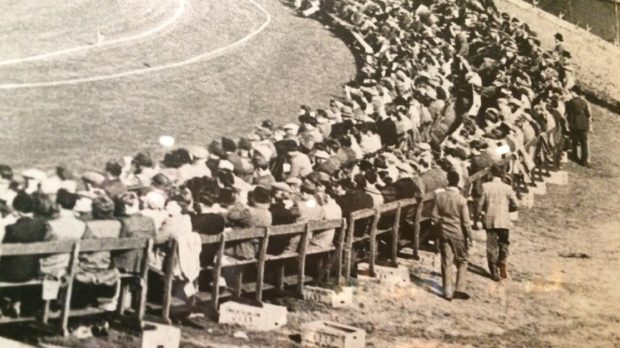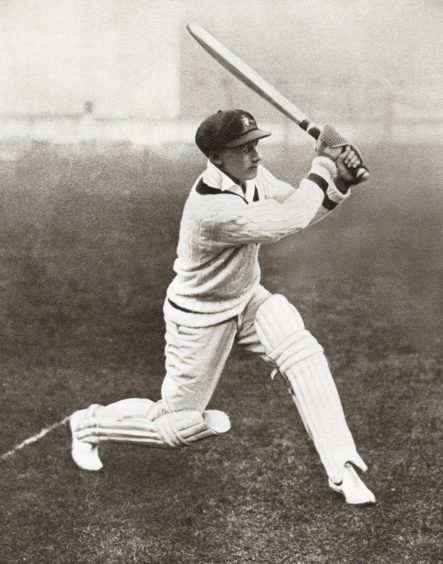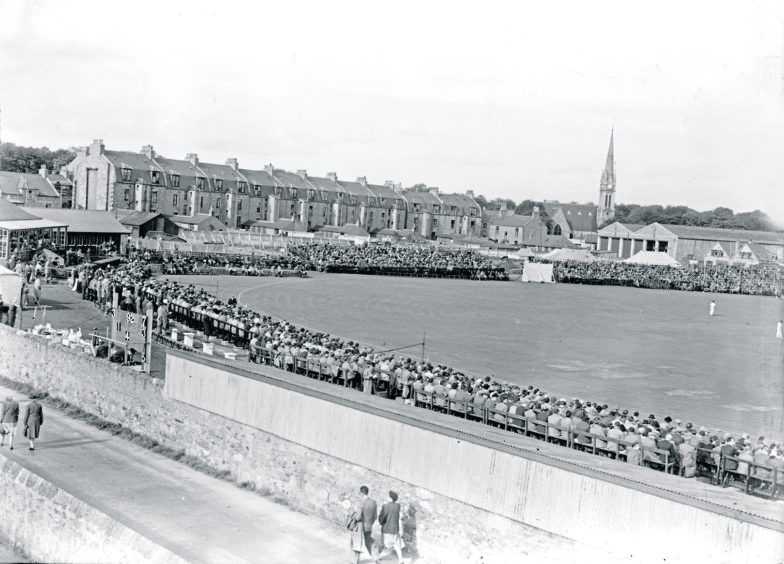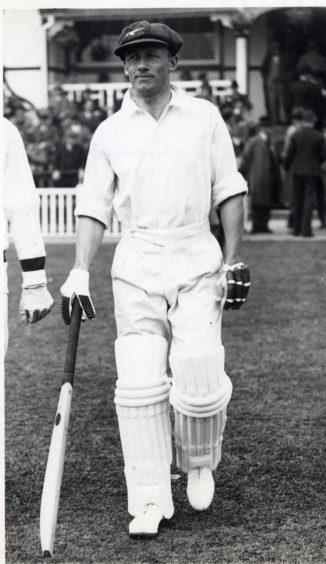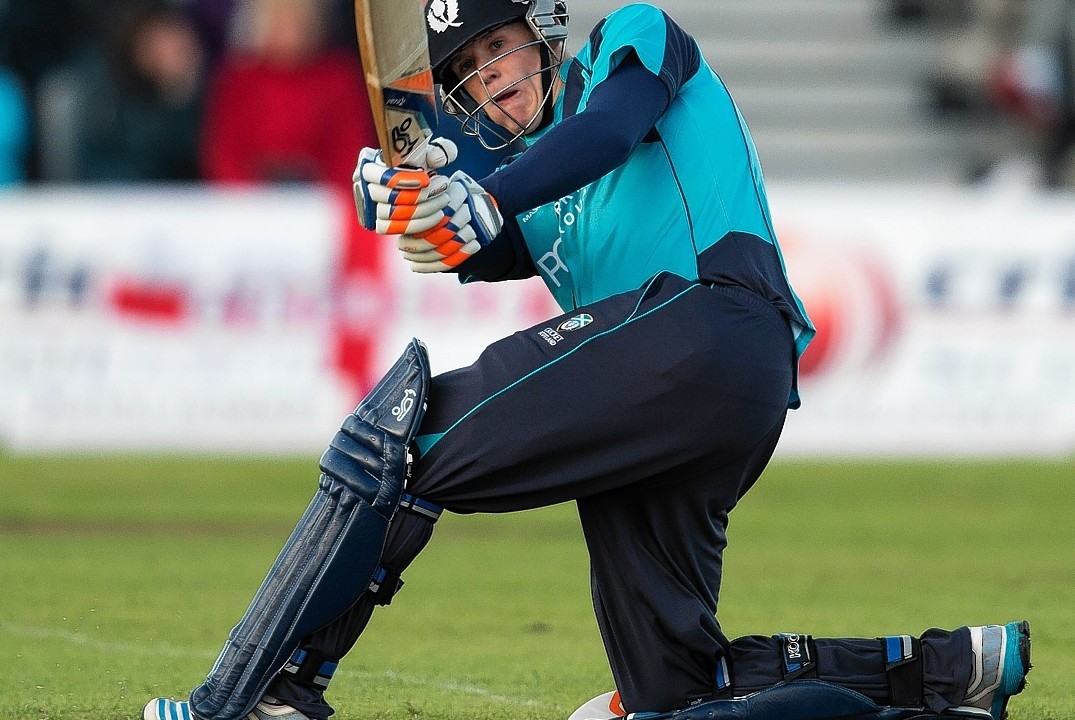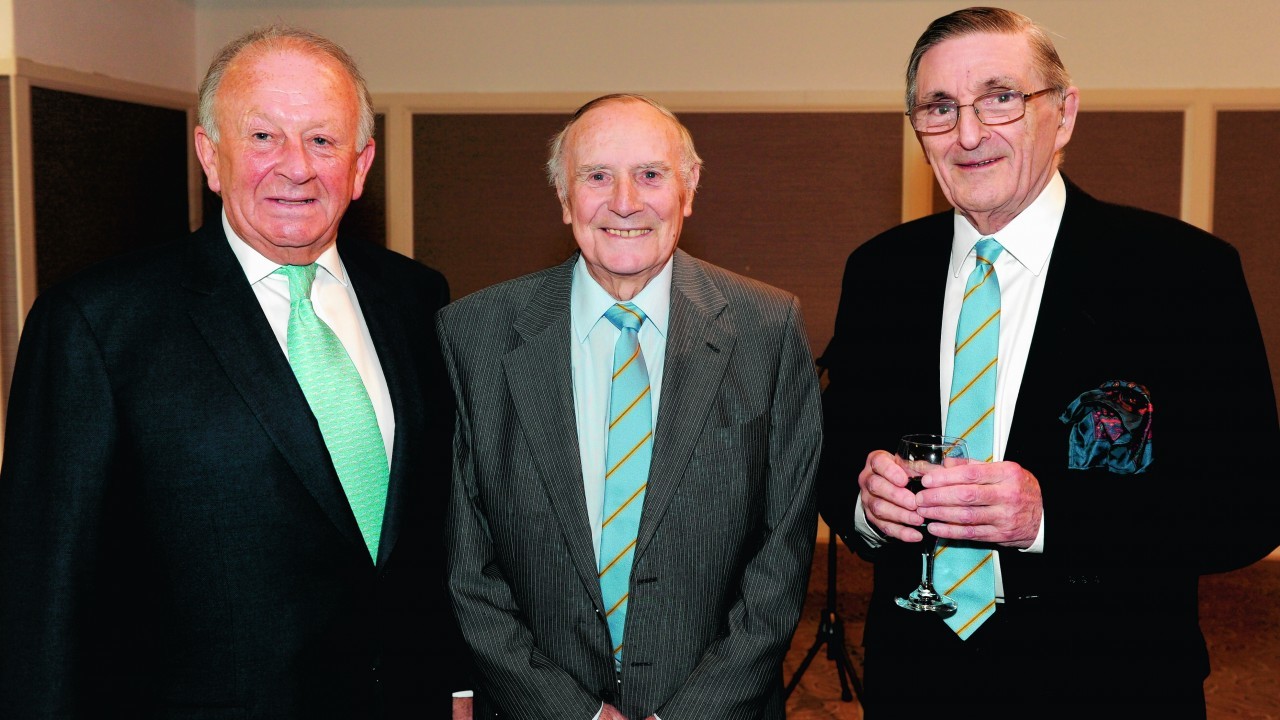They were two of the great days in Scottish cricket history; the match which featured the Australian “Invincibles” and their legendary star, Sir Don Bradman, in 1948.
The contest, which was the maestro’s last appearance in Britain with a bat in his hand, was staged at Mannofield, the home of Aberdeenshire CC, and attracted more than 10,000 spectators who revelled in being part of a piece of special sporting lore.
Sad and frustrating
I was down at the ground this week and, as remains the case everywhere across Scotland, the clubhouse is closed due to the Covid-19 lockdown.
It’s a sad and frustrating state of affairs, especially for those who are in danger of losing their jobs at various clubs as the economic impact of the pandemic becomes clearer.
Yet, for those of us who have been privileged to talk to some of the people who watched Bradman mark his last hurrah with a peerless 123 not out, the venue still evokes memories of buses speeding along Great Western Road en route to a date with possibly the greatest player who ever graced the game.
Some of the fans cycled up from the central belt of Scotland.
I even talked to one gentleman who travelled with his friends all the way from Leeds and slept in farmers’ fields along the way as he relentlessly pedalled towards the Granite City.
Buff Hardie
Closer to home, a young Buff Hardie – who later became famous as part of the ‘Scotland the What?’ ensemble – was among the throng who could hardly believe their good fortune when the sun shone, the Australians swaggered into Aberdeen, and these blithe boys of summer celebrated being involved in a piece of history.
It’s a long time ago and precious few of those who were present are still with us. Buff, himself, is in his late 80s and yet his eyes sparkled when we reminisced about him being one of the spectators who watched Bradman and his compatriots, just a few days after they had made mincemeat of England in the Ashes.
This Hardie, of course, has gained plenty of laurels of his own.
As one of the members of the popular STW trio, alongside George Donald and Steve Robertson, who performed all across the world, they were awarded MBEs in 1994 and honoured with the Freedom of Aberdeen in 2008.
But, as one of life’s genuine cricket aficionados, he has never forgotten the remarkable scenes which surrounded the biggest match in north-east cricket: a tussle between Bradman and his illustrious band and the amateurs of Scotland.
Hardie said: “The place was packed and I don’t suppose we will ever see anything like it again. The organisers had erected temporary stands around the ground and every space was six, seven, eight rows deep with supporters.
“I was just 17, but we had all followed the Australians throughout that summer and we knew the quality they had in their team.
“It wasn’t just Bradman. They had other wonderful players, of the calibre of Keith Miller, who was one of the best all-rounders in history; Neil Harvey, Ray Lindwall, Ian Johnson…and so it went on.
“They reckon there were 8,000 there on the first day when the Scots were bowled out for 178. But our lads fought hard and the Australians didn’t have it all their own way.
Or not on the first day at least.
Legendary cricketer Don Bradman played his last international in Aberdeen in 1948. He scored a century pic.twitter.com/MnGjE9CoN0
— Modern Collections (@nlsmodern) July 25, 2016
“However, it was all managed quite nicely for the Saturday when 10,000 people turned up to watch the action. Bradman came to the crease quite quickly and made a near effortless 123 not out in about 90 minutes. He was 40 by that stage, but we all admired his talent and that of Colin McCool who also hit a century.
“Eventually, they declared (on an imposing 407 for six) and there wasn’t much the Scots could do to stem the tide.
“Even the Australian wicket-keeper Don Tallon took his gloves off, had a wee bowl, and took a couple of wickets as the home side were dismissed for 142.
“But the result didn’t matter to anybody who was lucky enough to be there. It was Bradman’s final appearance on British soil and we had been there to see it.
“The next day, he travelled to Balmoral to meet the King (George VI) and some of the stuffier royal commentators were shocked when he was photographed walking with the monarch with his hands in his pockets. But it obviously didn’t bother the King that much – after all, Bradman was given his knighthood just a few weeks later.”
Beaming smiles
Even now, Hardie can still recall the sheer excitement which enveloped the city, with buses speeding along from Union Street to the ground and the whole place full of people with beaming smiles on their faces.
Mannofield has staged all manner of international matches down the decades – including ODI contests against the likes of England and New Zealand – and there was a thrilling spectacle against the former as recently as 2014 when Aberdonian Michael Leask produced a gem of an innings against the English attack.
Hardie and his now sadly-departed STW confreres made millions laugh in their own right, while promoting the Doric language and creating rib-tickling tales which were often set in the fictional Aberdeenshire Village “Auchterturra”.
But he was somebody who has never lost the cricket bug since that early introduction to the game’s legends. Indeed, as he added, he was also at some of the most astonishing tussles in the chronicles of the Test game.
He explained: “I didn’t get to as many Tests as I would have liked, but I was at Old Trafford in 1956 when Jim Laker took 19 wickets to hasten an Australian defeat in Manchester. That was something remarkable.
“Then, later on, I went to York for a holiday with my wife, Margaret, and we heard England were in all kinds of trouble. When we eventually returned to our hotel, I asked one of the staff: ‘So, has the match finished?’
“He replied: ‘Not at all. Ian Botham went crazy in the second innings and he has given his team a narrow lead’.
“Well, I had to be there for the final day at Headingley (in 1981) and it obviously became one of the greatest fight backs ever with Bob Willis ripping through the Australians as England achieved an incredible win.
“I know that I’ve been fortunate. These are matches which people will talk about as long as cricket is played!”
Hardie has never strayed far from his roots. He celebrated his 80th birthday in 2011 with a group of friends and acquaintances at Mannofield and the setting was – where else – the Bradman Suite which is packed with splendid memorabilia.
He said: “I told the guests it was nice I had reached 80 at the same venue where I had watched the Don pass the same score more than 60 years earlier.
“And it really struck a chord with the audience.”
It doesn’t seem so far from Australia to Auchterturra, does it?
